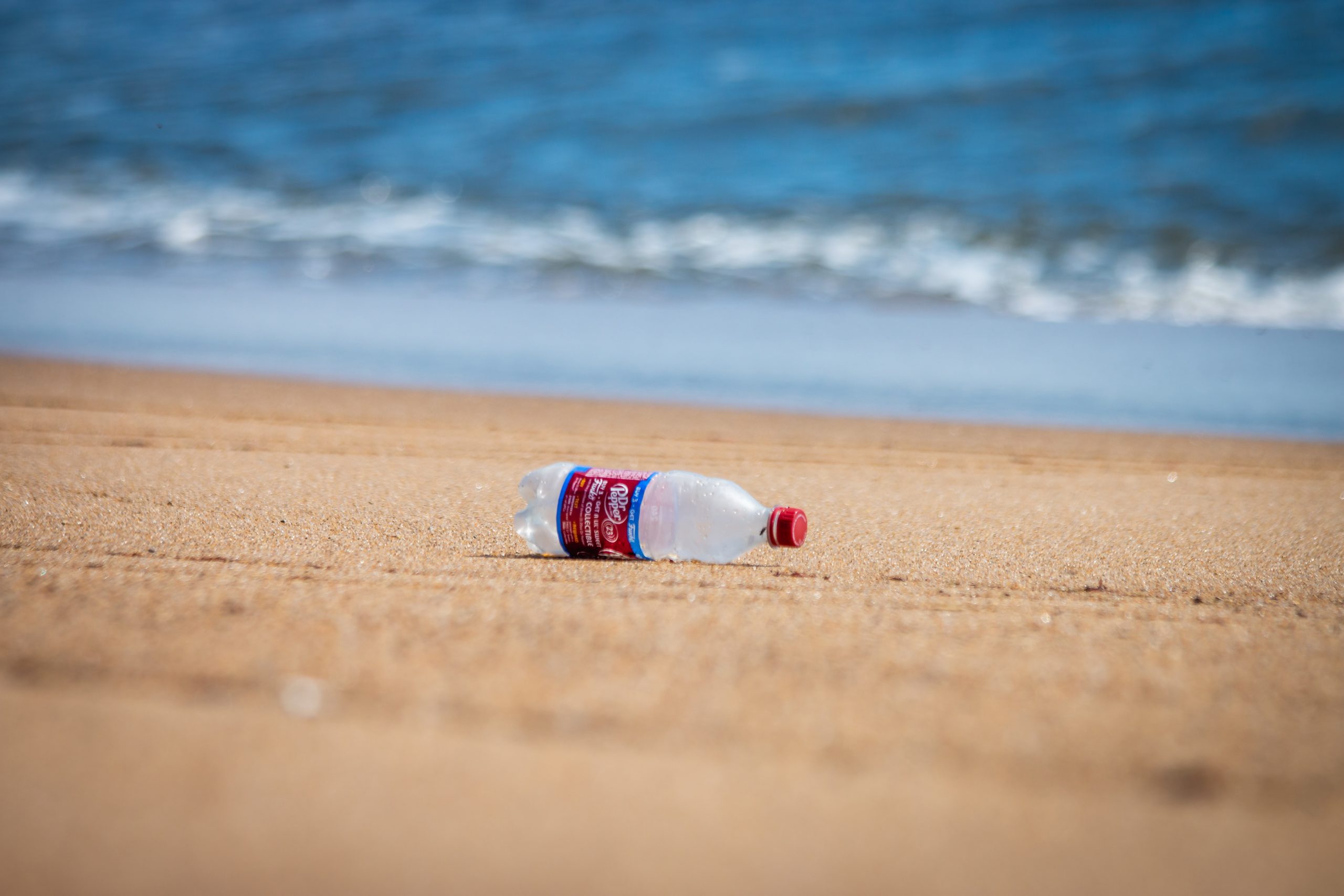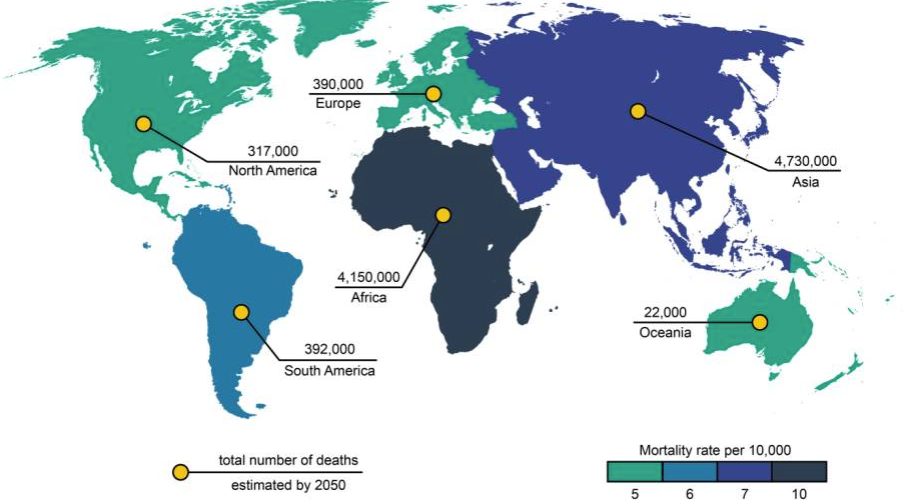Antimicrobial Plastics: The World’s Hidden Superpower?
November 3, 2020

Antimicrobial plastics have well and truly arrived and they will continue to be game changers across so many aspects of day-to-day life. In this post, we explore the importance of antimicrobial plastics and why they are making such a monumental difference in the world today.
But first, let’s get you up-to-speed on the topic itself; here’s a summary of the basics…..
What exactly is an Antimicrobial Plastic?
An Antimicrobial plastic is a synthetic polymer material that contains an integrated and active ingredient which prevents microbial growth. These ingredients are known as anti-microbial additives. In essence, they guard the polymer surface and provide a sterile environment.
They can protect against many types of micro-organisms such as Algae, Bacteria and Fungi.
Is there a difference between antimicrobial and antibacterial?
Yes. While often used interchangeably, there is a key difference. Antibacterial inhibits the growth (and can even totally prevent) bacteria. Antimicrobial on the other hand is more comprehensive and can give robust protection from bacteria, fungi’s, algae and even micro-animals (think dust mites).
Antimicrobials can inhibit or alter one or more of the following cell functions of microorganisms such as:
- Cell wall Synthesis
- Protein Synthesis
- Cell Membrane functions
- Nucleic acid synthesis
This broad spectrum use makes antimicrobials very potent.
How does antimicrobial plastic work?
In essence, the antimicrobial technology (the antimicrobial additive) is added to plastic, where it’s important that the end product is protected against harmful bacteria. When the bacteria comes into contact with the protected surface, it is prevented from growing, producing energy or self-replicating. In other words, the bacteria is killed off.
These types of plastics have been meticulously engineered to imitate antimicrobial peptides which are used by the immune system of living things to kill bacteria.
Ok so clearly it’s antimicrobial additives are comprehensive in it’s protection…but why does it matter for plastics?
What are the Benefits of antimicrobial plastic?
There are many benefits to antimicrobial plastics. Let’s explore:
Benefit #1 Protection for Polymers
The use of polymers is wide ranging in many different industries. With some of the most typical everyday products using polymers (such as Polyethylene (PE) Polypropylene (PP), Polystyrene (PS) and many more!)….there are many uses. This could be anything from toys to car parts.
However, the protection required becomes most apparent in the most vulnerable and important scenarios. An obvious one is in Healthcare.
Medical devices of various kinds are increasingly requiring antimicrobial plastics. In high stake situations which require medical ventilators, instruments and storage – it is becoming non-negotiable. With the growing rate of hospital-associated infections (HAI’s) worldwide, antimicrobial additives are touted to explode in demand in the coming years.
As medical device-associated infections accounts for one in every four infections in the US… the need is clear and urgent.
(In general, manufacturing medical devices today requires rigorous planning and precision – from using antimicrobial additives to harnessing cleanrooms for medical devices.)
Another industry requiring protection would be telecom devices – again, especially where there is a risk of contamination in high risk areas; light switches in hospitals, for example.

In summary, a major benefit and core function of antimicrobial additives in plastics is its protection (especially in the medical field).

Benefit #2 Longevity for Polymers.
Simply put, with antimicrobial additives – the functional lifetime of a plastic increases. Bacteria can cause a plastic to degrade quicker. But by preventing and reducing this – the given product is more durable. All this means better quality and a longer life-expectancy for your product. This can translate to happier customers and better business.
Benefit #3 Antimicrobial plastics are more hygienic to use
Some plastic products such as plates, containers and reusable cups can host harmful bacteria, particularly if the storing conditions are unhygienic. Consequently this can pose a health risk to the users.
One study reveals how reusable grocery bags can carry potentially dangerous bacteria. It even found that 10% of reusable bags contained E.coli. That stands to reason given the multiple uses of reusable bags, often with organic produce, and the poor storage conditions; in dusty cupboards in homes etc
By using antimicrobial plastic for a variety of commonly used plastic products, health risks can be greatly reduced and general hygiene standards can be improved. Consequently with wider-use this could all lead to……..
Benefit #4 A boost to the environment?
Plastic waste is a serious problem worldwide. It’s estimated around 8 million pieces of plastic makes their way into our ocean…every day. A mind boggling figure.
Take drink containers for example. It’s said 14% of all litter relates to this alone. By harnessing antimicrobial additives for reusable plastic cups, this would go a very long way towards combatting this problem.
Waste pollution is a complex issue with many different approaches. The use of bioplastics can be harnessed to become part of a remedy to the overall problem. And antimicrobial plastics may be another solution to contribute to solving this key issue of our times.
Benefit #5 Protects from bad smells and odours.
When plastics are not disposed of in the correct fashion, bacteria can develop. This can lead to stains and bad odours in the plastic itself. If the plastic product is protected by an antimicrobial additive, these unpleasant side-effects don’t occur. This feature offers a benefit which applies just as much to larger commercial users as it does to home of the domestic customer.
Benefit #6 Wider Economic and Human benefits
It’s utilitarian benefits are clear. But what about the big picture stuff? It seems bleak but it really can be a matter of life and death. In Europe, 7% of all admissions to acute hospitals result in a Healthcare- associated infection (HAI) with 37,000 direct fatalities and up to 110,000 fatalities if indirect deaths are included (all data sources are from NCBI) And then there’s the economic burden to the global health sector. HAI’s are estimated to cost USD 6.5 billion and an additional 45 billion of indirect costs in the U.S alone. Of course while this is a major economic cost- it pales in comparison to the tragic human cost for society at large.
It is for this reason, that antimicrobial plastics in healthcare have such tremendous and important potential – for everyone.
These are the 6 core benefits, but there could be more regarding antimicrobial polymers in particular…
A Solution to a Longer-Term Problem?
While the medical industry is a key driver in finding new applications for antimicrobial plastics, there is also another deadly problem waiting for us in the long-grass of healthcare.
Antimicrobial Resistance ( AMR).
The serious and deadly rise of antibiotic and antimicrobial resistance has and will continue to shape the bigger-picture conversation in healthcare.
According to the Centres for Disease Control and Prevention – more than 2.8 million antibiotic- resistant infections occur in the U.S each year with more than 35,000 deaths. Current estimates state if nothing is done, 10 million deaths in the year 2050 will be due to AMR.

Source: NCBI
Furthermore, the CDC has identified 18 antiobiotic-resistant bacteria and fungi at present that contribute to this major challenge.
So clearly AMR is a serious global issue – but how does antimicrobial plastics play a role?
Well it is not clear yet, and research is still underway, but there may be signs to suggest that antimicrobial polymers could be a potential replacement for existing Antibiotics.
One study has investigated that exact question:
“Polymers with innate antimicrobial properties or that have the ability to be conjugated with other antimicrobial compounds create the possibility for replacement of antimicrobials either for the direct application as medicine or implanted on medical devices to control infection”
This could potentially be a game changing answer to the problem. With structural and chemical diversity,polymer chemists can design, manipulate and construct a variety of polymers with cationic and amphiphilic structures that can act as antimicrobial.

Source – NCBI
The discovery of effective antimicrobial polymers is of course dependent on the sharing of knowledge between the areas of synthesis of polymers and microbiology.
While this still may be one for the future – it is a potentially exciting and transformational use of polymers in the global battle with AMR.
In any case, in the interim the use of antimicrobial additives in plastics for medical devices is only going to improve sanitation and help healthcare in the wider context. Antimicrobial plastics’ role in protecting the very fabric of society is key and is going to continue to grow and evolve with time.
Other Common questions on Antimicrobial plastics
Will antimicrobial additives affect the mechanical properties of the final product?
No. The additive levels are generally very low and do not cause any adverse mechanical issues to the product.
How do I know the additive is present in the moulded parts?
The customer or the manufacturer can submit a sample of the final moulded parts to external laboratories for analysis and subsequent Certification. (Standard labs tests with MRSA and E-Coli bacteria.)
When is the antimicrobial additive added to the plastic? (and how?)
It is added at the production stage. The additive can be formulated in different ways – although a concentrate would be one of the most common ways. Once infused into the part (or product), it reaps the antimicrobial benefits .
What antimicrobial additives are used for plastics?
It depends. Often Silver-ion-based inorganic compounds are used as antimicrobial additives. Other antimicrobial additives include 10,10-oxybisphenoxarsin and 2-n-octy-4ixothiazolin-3–1. In the presence of moisture – an electrochemical reaction releases silver ions that penetrate microbes making them unable to live, grow, or reproduce.
Final Words on Antimicrobial Plastics

Antimicrobial Plastics have a major role to play in the modern world. In industries from food and beverage to telecoms – there are many applications to this technology. Arguably the biggest and most urgent is in healthcare. With the rising tide of hospital-acquired infections (HAI’s) in our medical system’s globally… the need to take action in this context is now profound.
We’ve also explored what could be coming down the tracks for antimicrobial polymers in the vital fight with Antimicrobial Resistance (AMR).
The uses and applications of antimicrobial additives in plastics and polymers is very extensive and becoming increasingly necessary. From a medical (and commercial) point of view – it’s becoming a specified requirement for many components.
Are you looking for Antimicrobial solutions for your plastics?
If you are looking to create and manufacture a part with an antimicrobial additive in it, then we would love to help you. Key Plastics has experience applying this to components for a number of industries.
Please get in touch to discuss your requirements.



